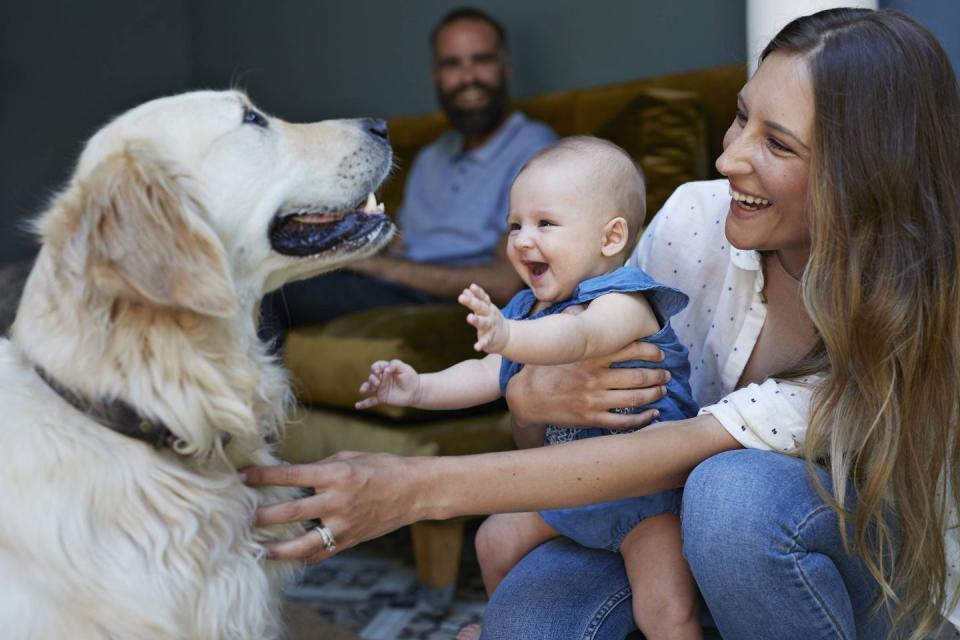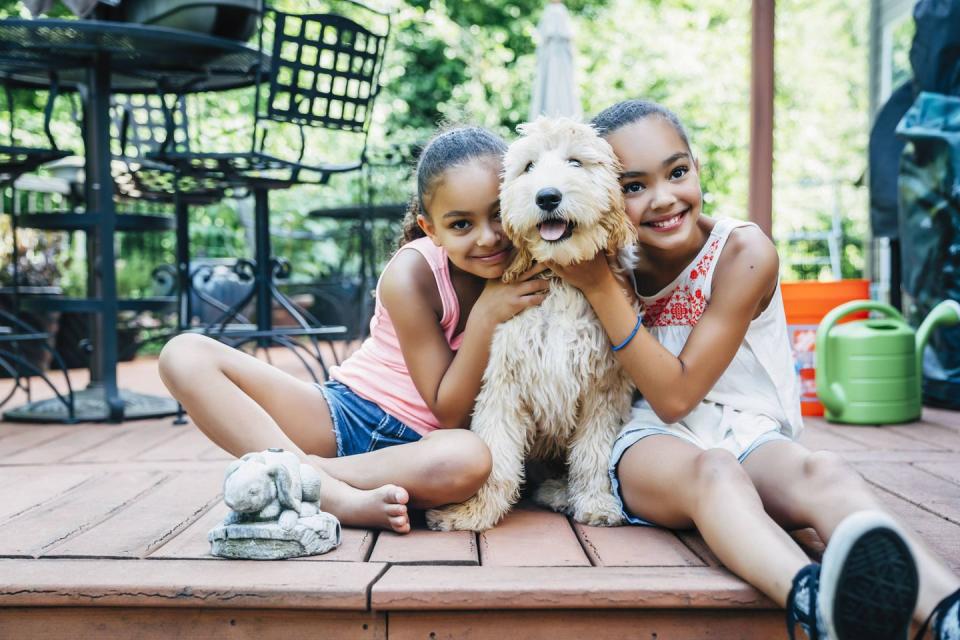Do Dogs Smile? Here's What's Really Behind Your Pup's Goofy Grin
"Hearst Magazines and Yahoo may earn commission or revenue on some items through these links."
Most dog owners have fallen victim to one of their dog's many endearing facial expressions. Whether it's puppy dog eyes, a cocked head, or a sweet dog smile, they seem to have a way of communicating their emotions to us and understanding our emotions in turn — and we often reward them with love and treats.
Some people think the "dog smile" is a sign that your dog is feeling happy, but Sean McCormack, head veterinarian at subscription dog food brand Tails and author of The Happy Dog Cookbook, tells Woman's Day that this isn't entirely true. "Although it appears they’re smiling with that toothy grin and waggy tail, it’s not really the same as our smile," he says, noting that dogs actually have fewer facial expressions than humans, so they communicate with us more through their body language; for example, with the position of their ears, head, and tail.
There isn't much research to back up the idea that dogs are intentionally "smiling" at us, according to Live Science. It's even difficult for scientists to study dog expressions because the research can become subjective. Live Science notes that people often have a tendency to anthropomorphize, or attribute human characteristics to dogs (I mean, that's why we're even asking the question "can dogs smile?"). As a result, people — scientists included — can misinterpret dog expressions.

But there is some science behind why dogs have developed what looks like a human smile. "It’s thought that we subconsciously relate to dogs that have a more human appearance, especially in the facial department," McCormack says. "After all, it’s the part of the body that we as humans express ourselves most strongly with." As a result, humans have selected and bred dogs over many generations that we could relate to most and that we felt were most communicative.
"It follows that over time we’ve altered the ancestral wolf-like dog to become the domestic dog we know and love today, with what we consider to be a beaming smile when happy," he says.
By selecting and breeding for more affectionate dogs over the centuries, humans have also neotenized them, McCormack says, which means we've helped them retain juvenile features. "So effectively we’ve turned the ancestors of domestic dogs into semi-permanent puppies." The dog "smile," which is often accompanied by a wagging tail, playful behavior, and affection, might be a part of these neotenic changes.
Humans also usually respond positively to seeing dogs "smile" or seem happy. Studies have shown that our brains produces oxytocin, which is known as the "cuddle hormone" that's associated with bonding, when we interact with dogs. "An oxytocin surge may affect our heart rate, facial flushing, our tone of voice and many other subtle cues that our dogs pick up on," McCormack says. And responding to our emotional cues has benefitted dogs as a species. "The dogs who were good at this were the ones we were most likely to favor and breed from, passing their genes (and amazing perceptive skills) to the next generation," he says.

Unfortunately, McCormack notes that humans may have taken breeding for cute traits too far. Experts think that much of the appeal of short-faced, or brachycephalic, breeds like English Bulldogs, French Bulldogs, and Pugs, is that they look like human infants. They have flattened faces, large eyes, and a wide "smile."
"These are all juvenile human or primate facial features that trigger our nurturing instinct," McCormack says. "But unfortunately they can predispose these breeds to breathing issues, eye problems, and skin fold infections."
Overall, though, dogs benefit from their "smiles" in one central way: they make humans happy. And by making humans happy, their species and genetic lines are preserved, and they receive love, affection, and maybe even treats.
"Most dog behavior is performed because it’s going to bring a benefit to the dog, so very often they’ve learned that a certain look will result in a delicious treat," McCormack says. "But there’s no doubt love and affection counts as a treat too." Dogs might be working us for treats when they seem to be smiling, but they also do love us.
"Dogs actively seek out our company, touch and affection, so it’s certainly a loving relationship and strong emotional bond that goes both ways."
You Might Also Like

